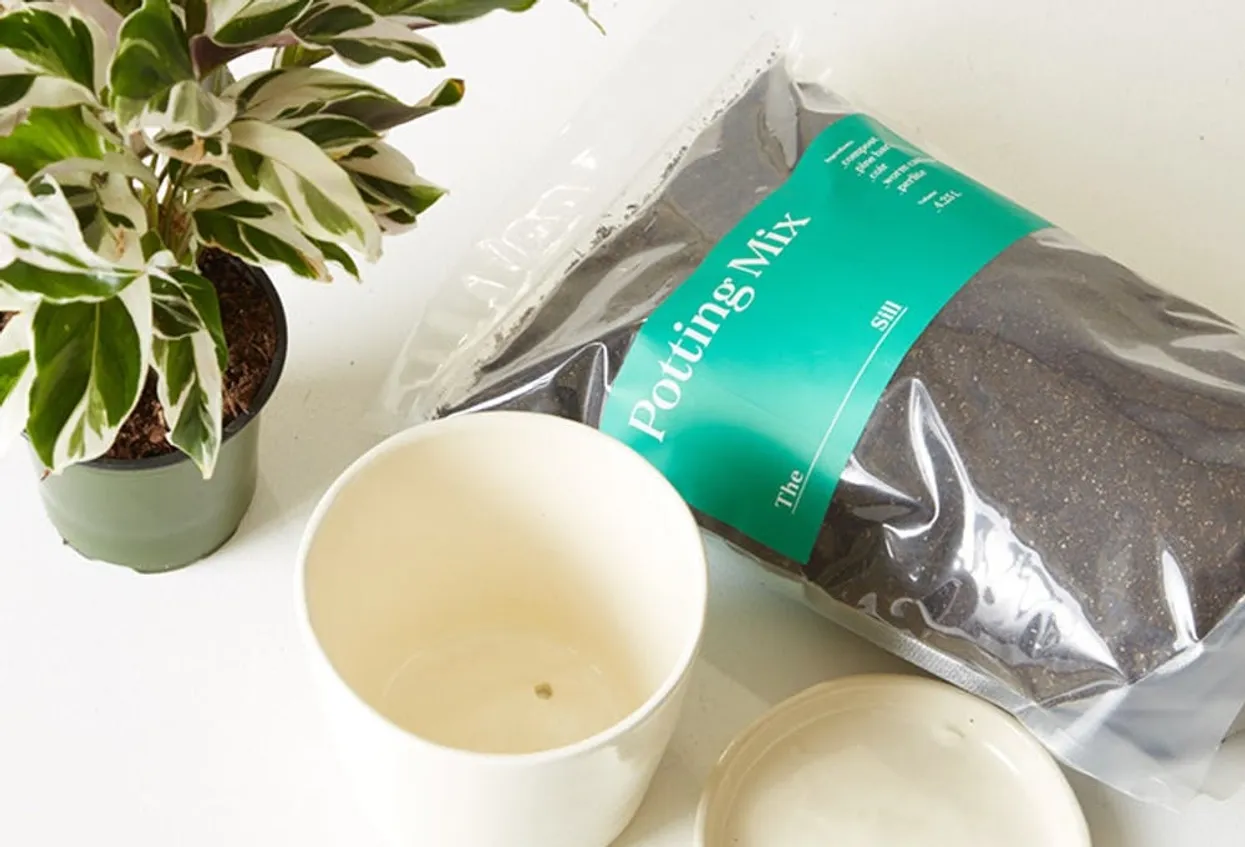
The Sill's mission is to empower all people to be plant people. So we're kicking off a new series committed to growing your green thumb. Check out all the gardening tips, hacks, and inspo you need. Happy planting!
Repotting doesn't necessarily mean changing a plant's pot: It can mean changing its soil or potting mix. Fresh soil means new nutrients! (Great news if you love your current planter, but if you're looking for a new one, that's fine too!)
If you are changing planters, try to keep the size increase to less than 3 inches in diameter for tabletop planters and less than 6 inches in diameter for floor planters. The size is important here: Typically when you move your plants to a larger pot, you're inclined to water more. Small plant + oversized planter + lots of soil + overwatering = killing with kindness. (And probably root rot.)

If you see one or a combination of these signs, you'll know it's time to repot:
- Roots are growing through the drainage hole at the bottom of the planter
- Roots are pushing the plant up, out of the planter
- Plant is growing slower than normal (different than winter dormancy)
- Plant is extremely top-heavy and falls over easily
- Plant dries out more quickly than usual, requiring more frequent waterings
- Noticeable salt and mineral buildup on the plant or planter
Plants typically need to be repotted every 12 to 18 months, but some slow growers (succulents, which tend to have smaller root systems than most common tropical houseplants, are a great example) can call the same pot home for years.
Early spring, before the start of the growth season, is generally the best time to repot your houseplants.

Repotting Toolbox:
- Your houseplant, of course!
- Newspaper for easy cleanup
- Fresh potting mix
- A watering can, spray bottle, or water bottle
- Scissors or pruners
- Your planter, new or old
10 Simple Steps to Repot:
1. Gather all of your potting materials.
2. Pour a layer of fresh, pre-moistened mix in the planter you're potting into, and pack it down.

3. Now take your plant, turn it sideways, holding it gently by the stems, and tap the bottom of its current container until the plant slides out. You can give it a bit of help with a couple of gentle tugs on the base of the stems.

4. With your hands, loosen the roots and prune any that are dead or extra-long.

5. If your plant is root-bound — with roots growing in tight circles around the base of the plant — unbind them as best you can and give them a little trim. You may find yourself tearing them a little if you cannot finesse them apart. Be as gentle as possible.
6. Remove about 1/3 of the old potting mix from around the plant's roots.

7. Set plant on top of the fresh layer of mix in the planter.

8. Add new potting mix around the plant until it is secure (sitting upright). Be sure not to pack too much soil into the planter, as you want the roots to breathe. Leave some space below the lip of the planter, about an inch or so for larger planters. Avoid piling soil all the way up to the top of the pot. You will not be able to water it properly, as water will rush off the sides of the pot without ever soaking in.

9. Even out the potting soil on top, making sure to leave the soil line an inch or so from the top. Water well and let it drain.

10. And ta-da! You've potted your plant.

P.S. Shop plants, planters, and potted plants here.
What houseplants are you using in your home this season? Let us know @BritandCo!
This post has been updated.

0 Commentaires